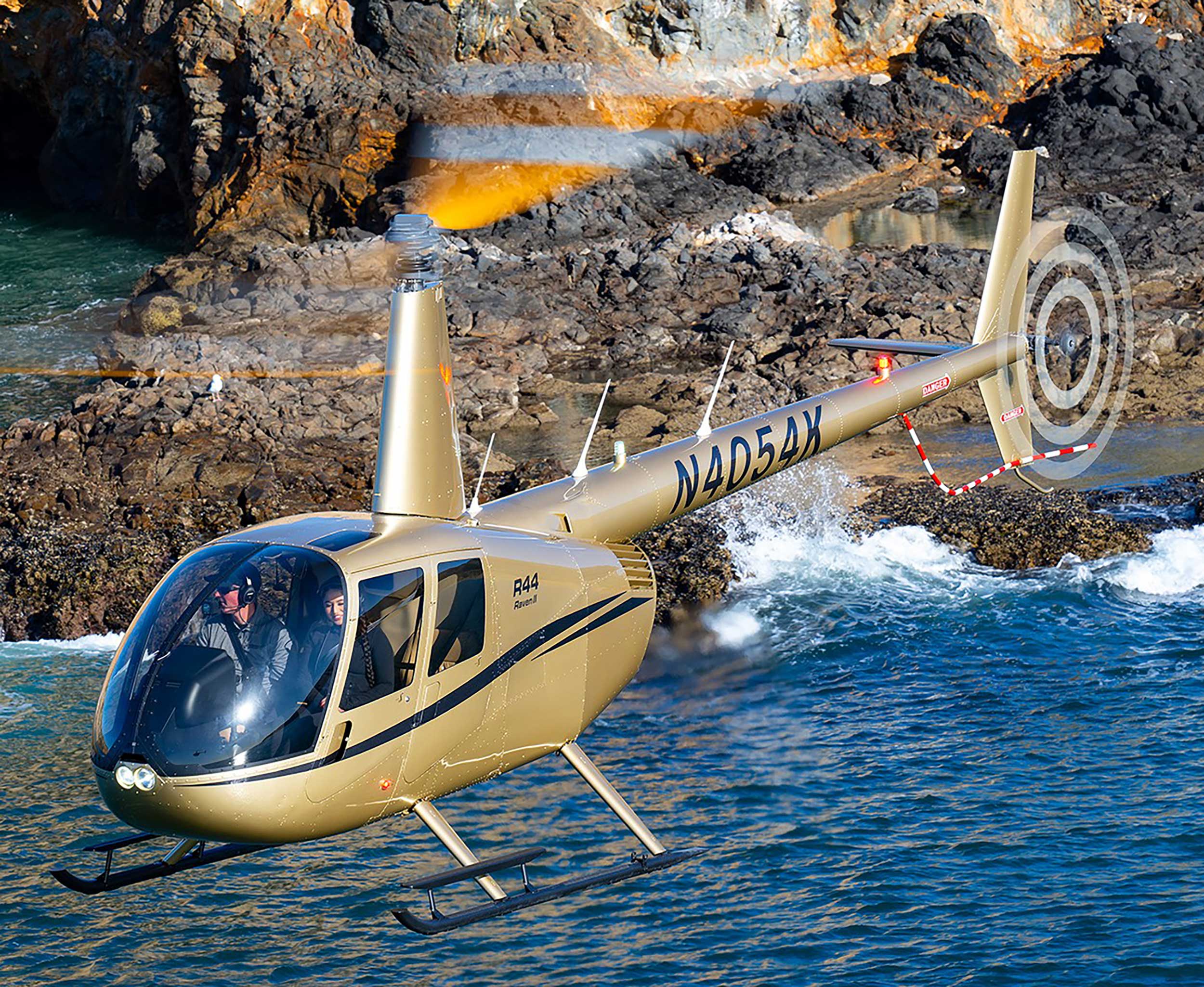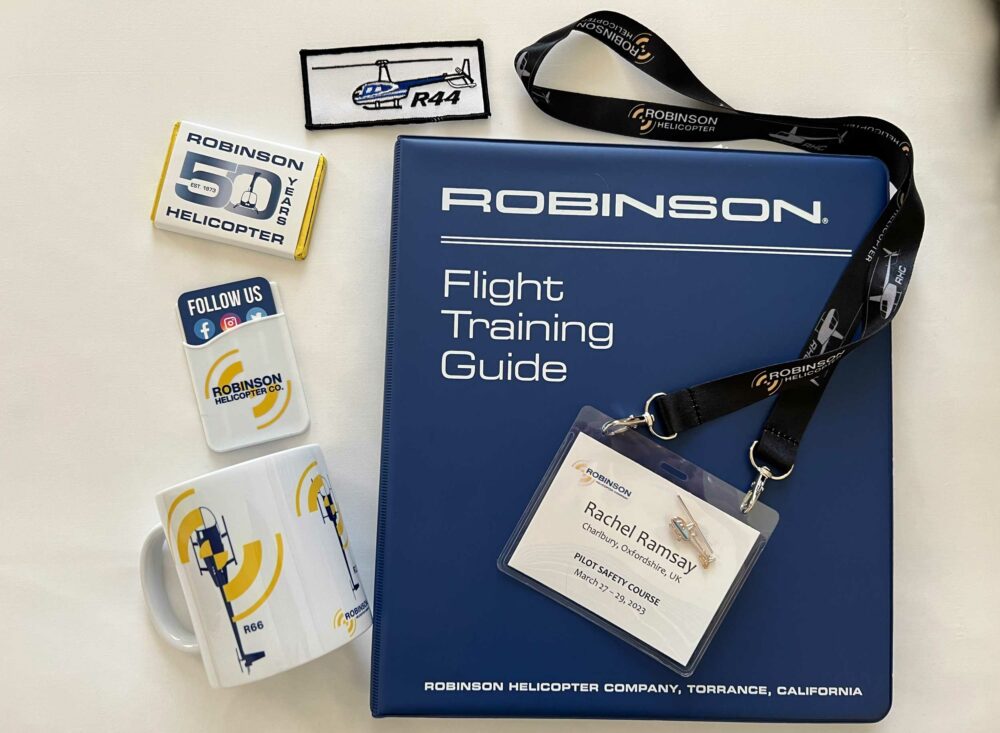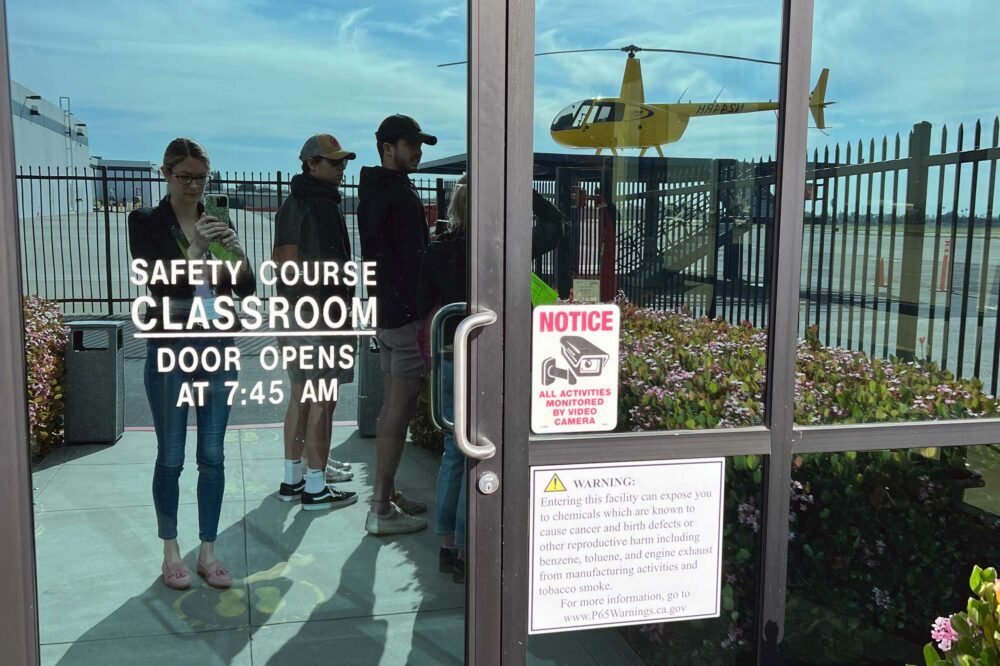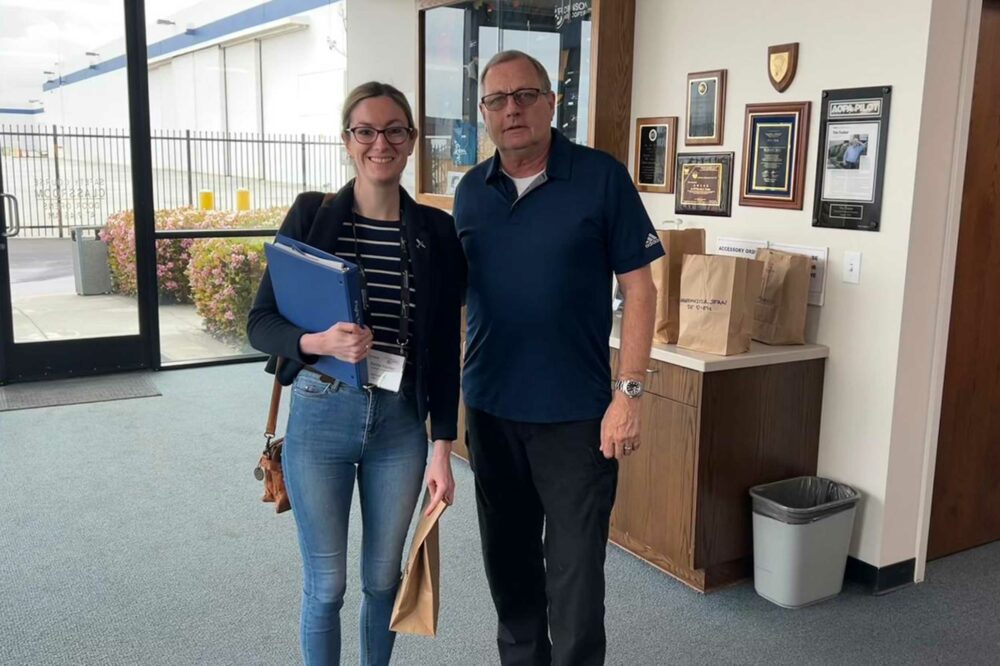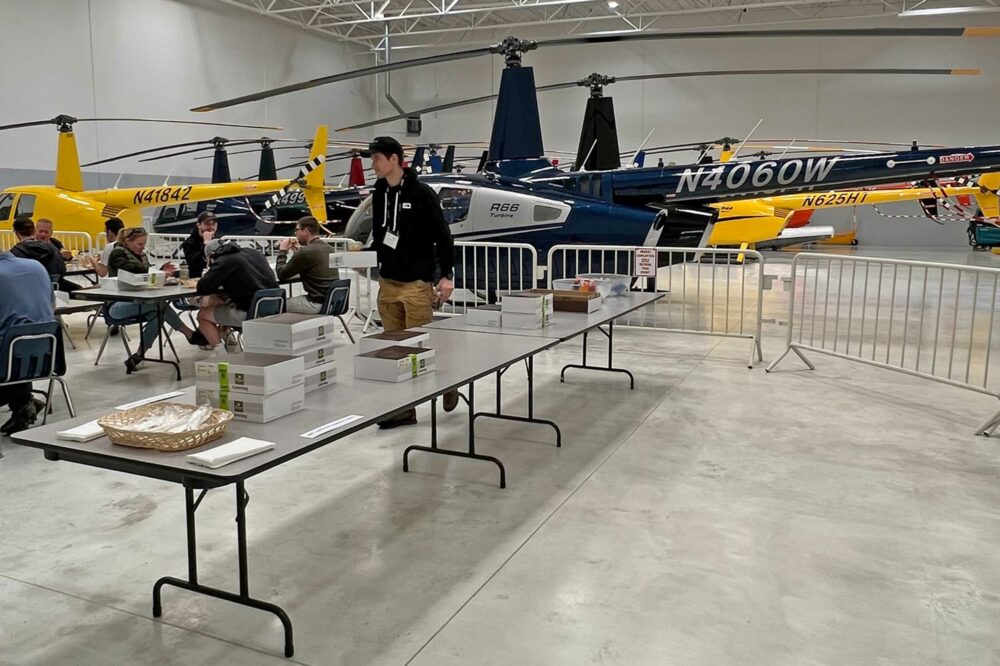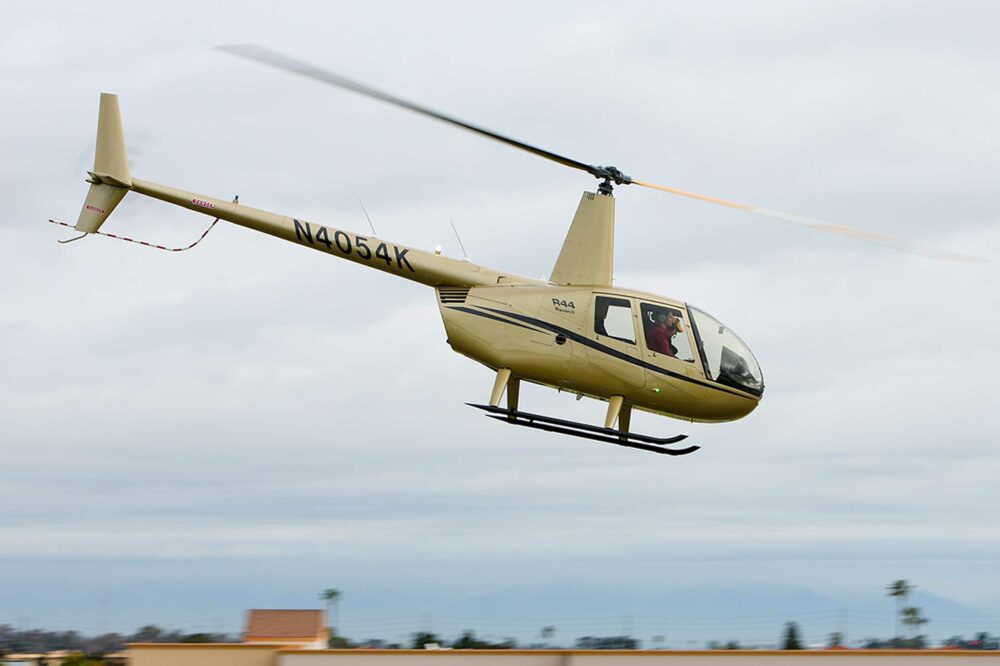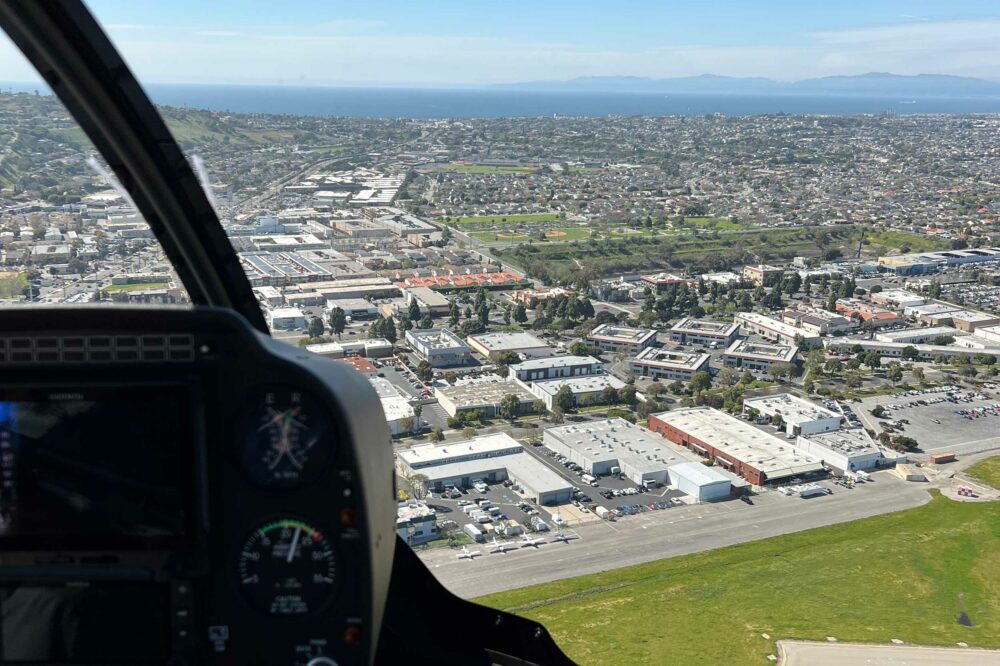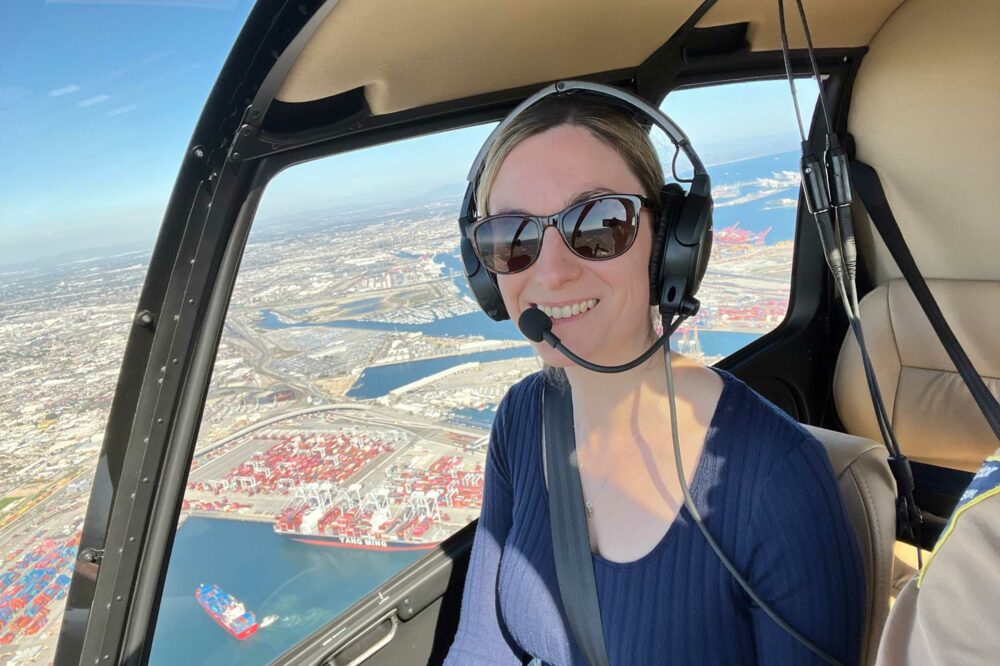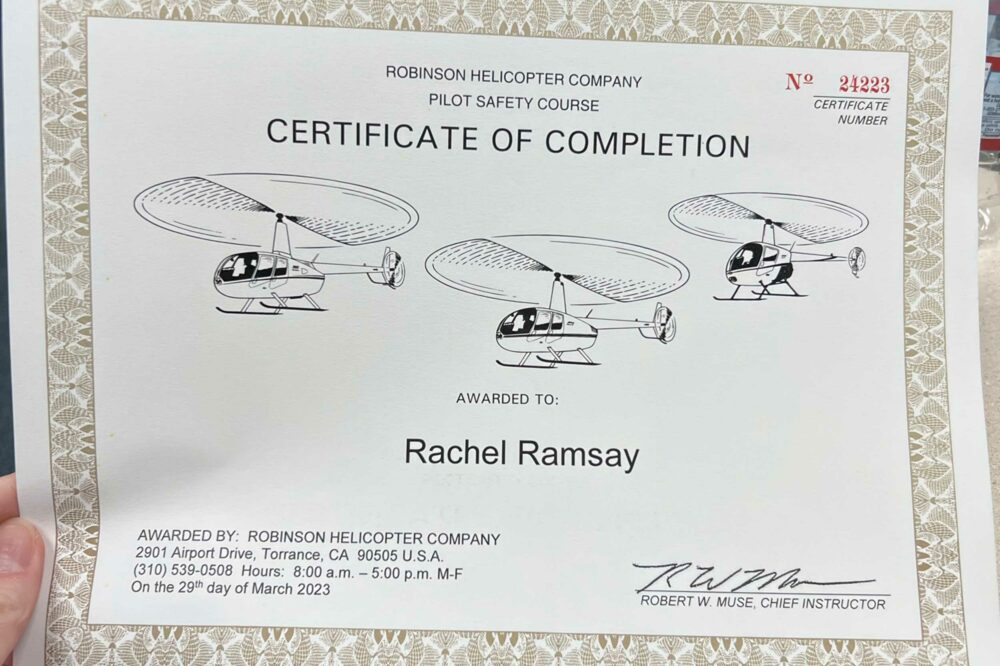Introductions
It’s soon clear that we’re in good hands with Bob, who’s Robinson’s Chief Flying Instructor and Director of Flight Safety. With more than three decades of flying and 24,000 hours under his belt, there aren’t many with as much experience as him, and across as many types of flying, including law enforcement.
Then comes the moment every Brit dreads: the introductions. We go around the room and we’re each asked to say who we are, where we’re from, what we fly, how many hours we have, and things like that.
Notwithstanding the horror I feel at having to speak in front of everyone, it’s nonetheless interesting to hear the range of different experience levels represented in the room.
At the bottom end, with just 68 hours under his belt, is a chap who’s just completed his PPL(H) and bought his own Robinson. At the other end, there’s someone with 8,500 hours, along with flying school owners, and an airline pilot who also flies helicopters.
As Bob says, ‘some of the most experienced pilots in the world come on this course’ – even if they fly Robinsons all the time. Then there are hobbyists like me, and a handful of owners or soon-to-be owners. There are only about four of us who also fly fixed-wing, and Bob jokes that we’re ‘the losers in the room’.
In between, there are a fair few younger folk with a couple of hundred hours who are training to be instructors. I’m initially puzzled when they refer to themselves as ‘CFI’, thinking they mean Chief Flying Instructor, but I later discover that in America, the abbreviation means ‘Certified Flying Instructor’.
More puzzling still, some refer to training to become a ‘CF double I’, which apparently means they’ll be able to teach instrument ratings.
Introductions over, we get stuck into the theme for the day: accident analysis.
Like Frank and Kurt, Bob also works in air accident investigation, and his insights are fascinating. He observes that fatal accidents often result from the accumulation of a series of relatively minor mistakes, and that careful study can reveal where these sequences can be broken – often with minimal effort.
He breaks flight safety into five pillars: education, training, standardisation, regulatory oversight and team work. Going through each in turn, he brings them to life with reference to the development of the R22 – never, he points out, intended as a training aircraft, though that’s the context in which most of us know it these days.
It’s interesting to hear Bob addressing Robinson’s early safety record and what the company has done to bring it in line with industry-wide statistics.
It’s something it has achieved through studying the causes of accidents and introducing some rules to address them, such as 20 hours before first solo, which was put in place after a number of accidents involving students going solo after five or six hours.
There’s a lot of laughter when he asks what we all think our chances of survival were had anything gone wrong on our first solo. He’s making the point that ‘overconfidence’ doesn’t necessarily mean arrogance – it’s almost a necessary state of mind to fly helicopters in the first place.
What distinguishes a good pilot from a great pilot, he says, is your approach – often to the little things like using a checklist, keeping up with safety alerts or simply slowing down. Indeed, ‘slow down’ is the one key takeaway Bob sees as most important from the course.
Throughout the morning we look at a number of photos and videos of accidents, and it’s sobering stuff. The majority of accidents don’t involve ‘accident-prone pilots’. They’re just normal people like you or I, who think we’d ‘never do that’.
“Be an aviator, not just someone who can manipulate the controls,” Bob summarises. “Take pride in what you do.”


